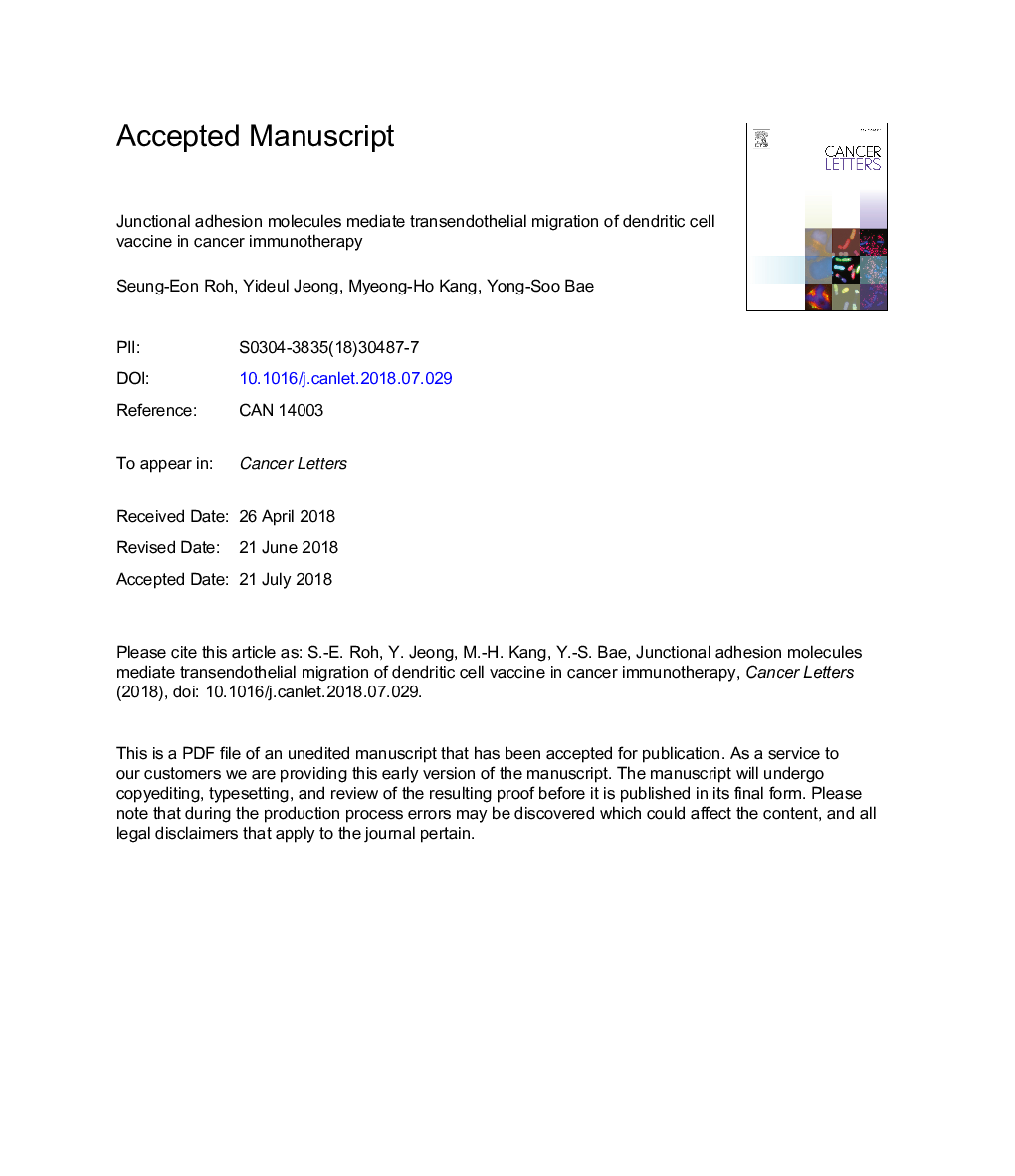| Article ID | Journal | Published Year | Pages | File Type |
|---|---|---|---|---|
| 8434146 | Cancer Letters | 2018 | 40 Pages |
Abstract
In vitro generated dendritic cells (DCs) have been studied in cancer immunotherapy for decades. However, the detailed molecular mechanism underlying transendothelial migration (TEM) of DC vaccine across the endothelial barrier to regional lymph nodes (LNs) remains largely unknown. Here, we found that junctional adhesion molecule (JAM)-Like (JAML) is involved in the TEM of mouse bone marrow-derived DCs (BMDCs). Treatment with an anti-JAML antibody or JAML knock-down significantly reduced the TEM activity of BMDCs, leading to impairment of DC-based cancer immunotherapy. We found that the interaction of JAML of BMDCs with the coxsackie and adenovirus receptor of endothelial cells plays a crucial role in the TEM of BMDCs. On the other hand, human monocyte-derived DCs (MoDCs) did not express the JAML protein but still showed normal TEM activity. We found that MoDCs express only JAM1 and that the homophilic interaction of JAM1 is essential for MoDC TEM across a HUVEC monolayer. Our findings suggest that specific JAM family members play an important role in the TEM of in vitro-generated mouse and human DCs from the inoculation site to regional LNs in DC-based cancer immunotherapy.
Keywords
MDCBMDCCoxsackie and adenovirus receptorPlasmacytoid DCIgSFMoDCCCLGM-CSFAPCHUVECbone marrow-derived DCPDCCTLCCRLPSMonocyte-derived DCImDcTemImmunoglobulin superfamilyHuman umbilical vein endothelial cellDendritic cellMature dendritic cellImmature dendritic cellantigen presenting cellgranulocyte-macrophage colony-stimulating factorcytotoxic T lymphocytelipopolysaccharideChemokine ligandCARJAMjunctional adhesion moleculeLymph nodechemokine receptor
Related Topics
Life Sciences
Biochemistry, Genetics and Molecular Biology
Cancer Research
Authors
Seung-Eon Roh, Yideul Jeong, Myeong-Ho Kang, Yong-Soo Bae,
